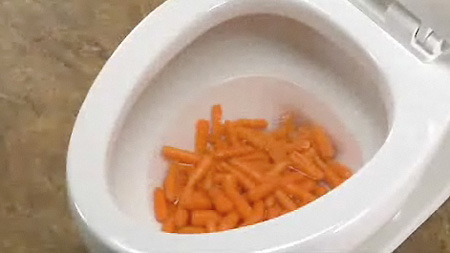Is it Advisable to Flush Food Down the Toilet?
Is it Advisable to Flush Food Down the Toilet?
Blog Article
The content down the page relating to Is it safe to flush food (especially rice) down the toilet? is definitely motivating. Don't skip it.

Introduction
Lots of people are commonly faced with the dilemma of what to do with food waste, specifically when it concerns leftovers or scraps. One usual concern that emerges is whether it's okay to flush food down the commode. In this write-up, we'll look into the reasons that people may take into consideration purging food, the effects of doing so, and alternate techniques for appropriate disposal.
Reasons that people could take into consideration purging food
Absence of awareness
Some individuals may not be aware of the prospective harm triggered by flushing food down the toilet. They might erroneously think that it's a safe practice.
Benefit
Flushing food down the toilet may appear like a fast and easy remedy to throwing away undesirable scraps, specifically when there's no close-by trash can readily available.
Negligence
Sometimes, individuals might merely pick to flush food out of sheer idleness, without taking into consideration the consequences of their actions.
Consequences of flushing food down the bathroom
Environmental impact
Food waste that winds up in waterways can add to contamination and injury water ecological communities. In addition, the water utilized to flush food can stress water sources.
Plumbing concerns
Purging food can lead to clogged up pipes and drains pipes, causing pricey pipes fixings and inconveniences.
Kinds of food that must not be purged
Fibrous foods
Foods with coarse appearances such as celery or corn husks can get entangled in pipes and create clogs.
Starchy foods
Starchy foods like pasta and rice can take in water and swell, leading to blockages in pipes.
Oils and fats
Greasy foods like bacon or cooking oils must never ever be flushed down the toilet as they can solidify and cause blockages.
Appropriate disposal techniques for food waste
Utilizing a garbage disposal
For homes outfitted with garbage disposals, food scraps can be ground up and purged through the pipes system. However, not all foods are suitable for disposal in this fashion.
Recycling
Certain food product packaging materials can be recycled, reducing waste and decreasing ecological effect.
Composting
Composting is a green means to get rid of food waste. Organic products can be composted and utilized to improve soil for horticulture.
The importance of proper waste management
Reducing ecological injury
Proper waste monitoring techniques, such as composting and recycling, help lessen pollution and preserve natural resources for future generations.
Protecting pipes systems
By staying clear of the method of flushing food down the toilet, property owners can protect against pricey pipes repairs and keep the honesty of their pipes systems.
Verdict
In conclusion, while it may be alluring to flush food down the toilet for benefit, it is necessary to comprehend the potential repercussions of this activity. By embracing appropriate waste administration techniques and getting rid of food waste sensibly, people can contribute to healthier plumbing systems and a cleaner setting for all.
FLUSH FOOD DOWN THE TOILET?
FLUSHING FOOD CAN CAUSE BLOCKED DRAINS IN YOUR HOME
All of the plumbing fixtures in your home are connected to the same sewer pipe outside of your home. This outdoor sewer pipe is responsible for transporting all the wastewater from your home to the Council sewer mains. Even small pieces of food that go down the kitchen sink can cause problems for your sewer. It should therefore be obvious that flushing larger bits of food, such as meat, risks a clog in either the toilet itself or the sewer pipes. Flushing greasy food is even more problematic because oil coagulates when it cools, coating the interior lining of your pipes.
THE TOILET IS NOT A BIN
Food isn’t the only thing that people shouldn’t be flushing down the toilet. People use the toilet to dispose of all kinds of things such as tampons, makeup wipes, dental floss, kitty litter and even underwear. Water goes to great lengths to educate residents about the high costs and stress placed on wastewater treatment systems simply from people flushing the wrong stuff down the toilet. It costs taxpayers millions of dollars each year, and homeowners thousands in blocked drain repairs.
FLUSHING FOOD IS A WASTE OF WATER
Flushing food is a waste of our most precious resource - water. In June this year Level 1 water restrictions were introduced to protect water supply from drought conditions. Much of New South Wales continues to be affected by prolonged drought with recent figures revealing up to 97 per cent of the state remains in drought. Depending on whether you have a single or dual flush toilet, every single flush uses between five and 11 litres of water. In the current climate this is a huge amount of water to be wasting on flushing food that should be placed in the bin (or better yet, the compost).
https://www.jabplumbingsolutions.com.au/blog/can-you-flush-food-down-the-toilet

I was shown that write-up on Think Twice Before Flushing Food Down Your Toilet from a pal on another web address. If you please take a moment to share this article if you enjoyed it. Thanks a bunch for your time. Return soon.
Schedule Services Report this page